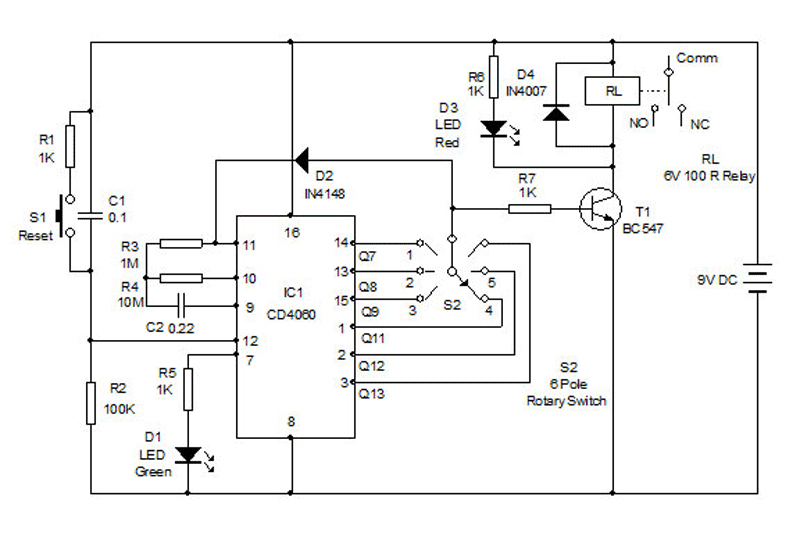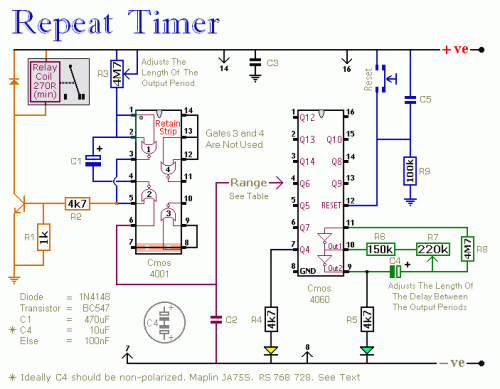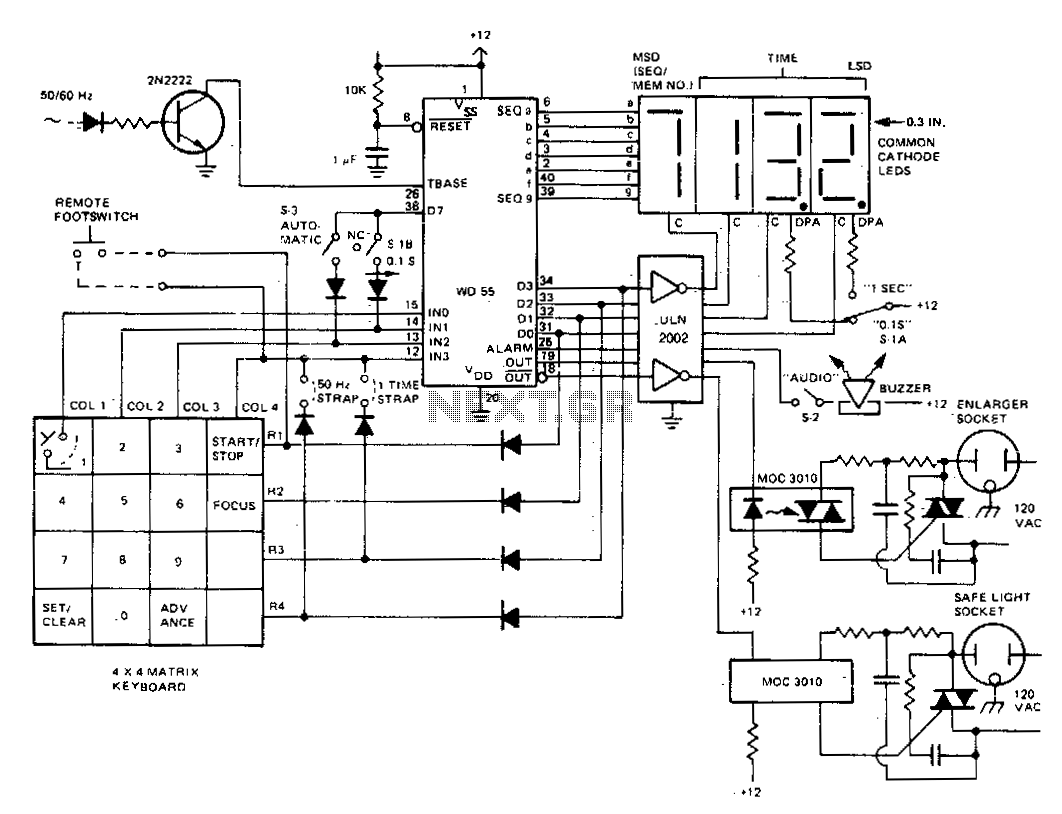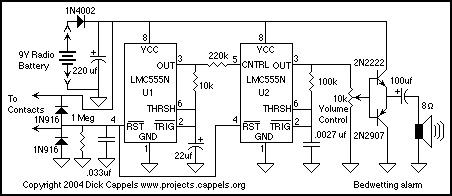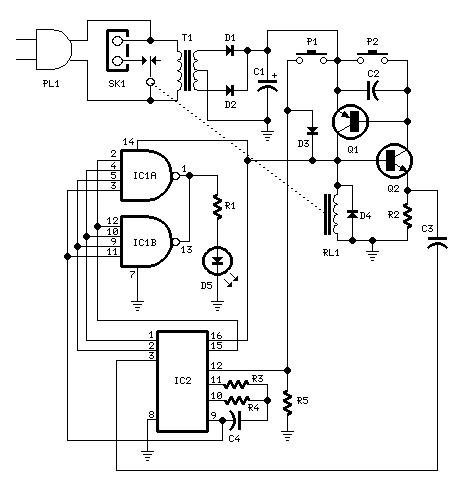
10 Minute Id Timer
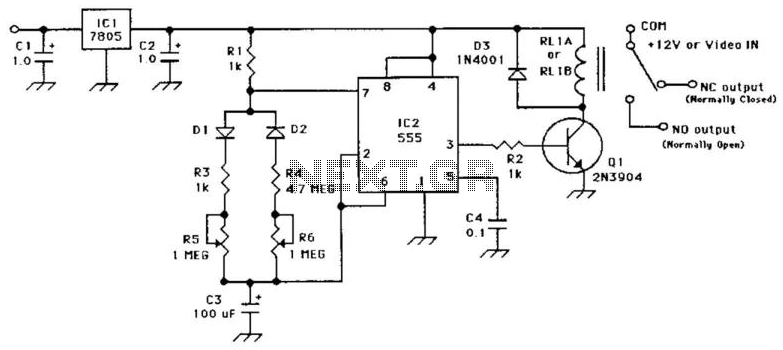
Designed to automatically identify a transmitter every 10 minutes, this 555 circuit has adjustable charge and discharge paths. The IC should be a standard 555 type, not a CMOS type. C3 should be tantalum. The relay is a small 5-V reed type.
The described circuit utilizes a standard 555 timer IC configured in a monostable or astable mode to periodically identify a transmitter. The operational principle involves the timer generating a pulse every 10 minutes, which is determined by the external resistor and capacitor values connected to the timing pins of the IC.
The circuit's adjustable charge and discharge paths allow for fine-tuning of the timing interval, thereby enhancing flexibility in various applications. The use of a tantalum capacitor (C3) is specified, as it provides stable capacitance and improved performance in timing circuits compared to standard electrolytic capacitors, particularly in terms of size and leakage current.
The relay utilized in this circuit is a small 5-volt reed relay, which is suitable for switching low-power signals. The relay is activated by the output of the 555 timer, allowing it to control the power to the transmitter or other connected devices. The choice of a reed relay ensures quick actuation and minimal power consumption, making it ideal for battery-operated applications.
Overall, this 555 timer circuit is designed to efficiently manage the periodic identification of a transmitter with adjustable timing and reliable switching capabilities, making it suitable for various electronic projects and applications. Designed to automatically identify a transmitter every 10 minutes, this 555 circuit has adjustable charge and discharge paths. The IC should be a standard 555 type, not a CMOS type. C3 should be tantalum. The relay is a small 5-V reed type.
The described circuit utilizes a standard 555 timer IC configured in a monostable or astable mode to periodically identify a transmitter. The operational principle involves the timer generating a pulse every 10 minutes, which is determined by the external resistor and capacitor values connected to the timing pins of the IC.
The circuit's adjustable charge and discharge paths allow for fine-tuning of the timing interval, thereby enhancing flexibility in various applications. The use of a tantalum capacitor (C3) is specified, as it provides stable capacitance and improved performance in timing circuits compared to standard electrolytic capacitors, particularly in terms of size and leakage current.
The relay utilized in this circuit is a small 5-volt reed relay, which is suitable for switching low-power signals. The relay is activated by the output of the 555 timer, allowing it to control the power to the transmitter or other connected devices. The choice of a reed relay ensures quick actuation and minimal power consumption, making it ideal for battery-operated applications.
Overall, this 555 timer circuit is designed to efficiently manage the periodic identification of a transmitter with adjustable timing and reliable switching capabilities, making it suitable for various electronic projects and applications. Designed to automatically identify a transmitter every 10 minutes, this 555 circuit has adjustable charge and discharge paths. The IC should be a standard 555 type, not a CMOS type. C3 should be tantalum. The relay is a small 5-V reed type.
